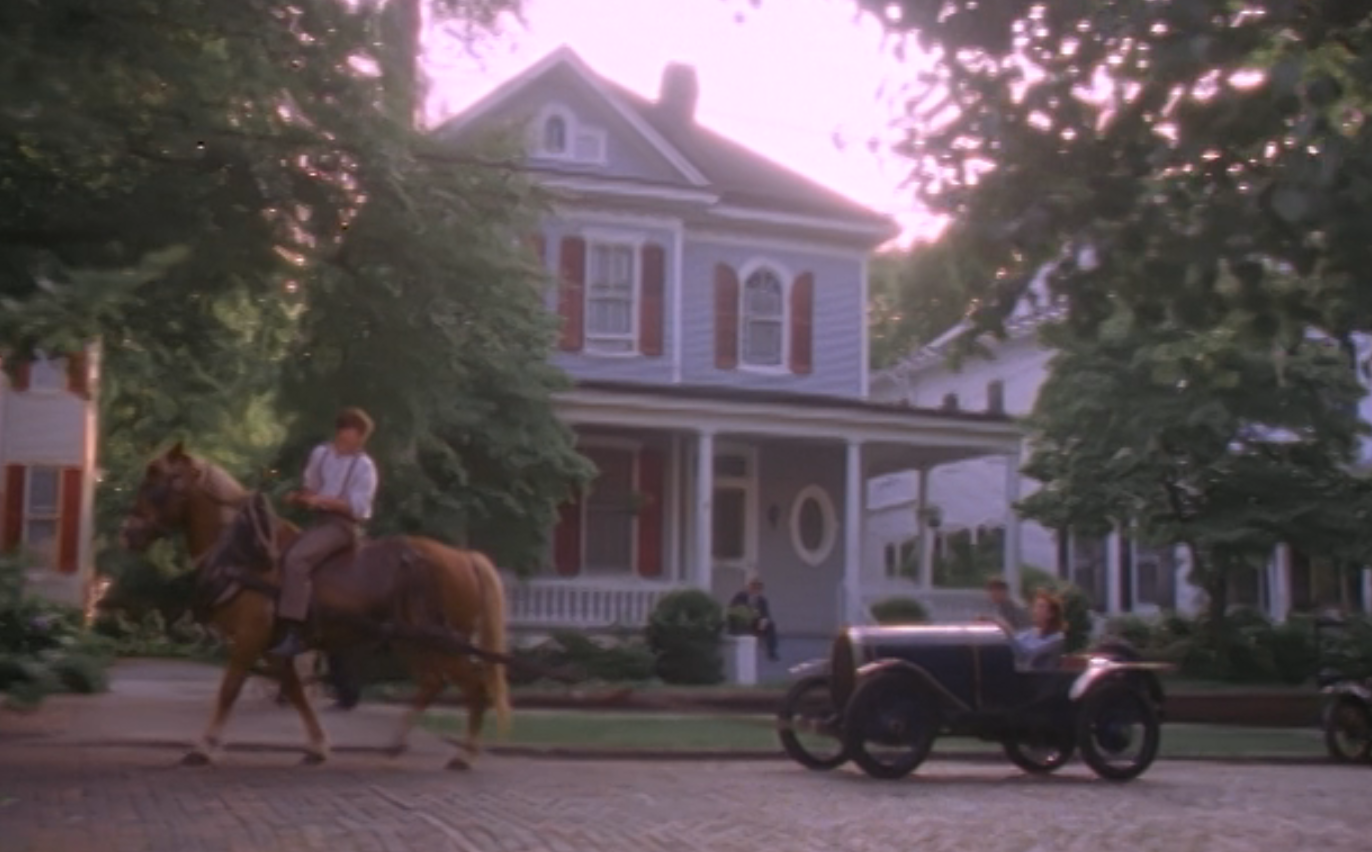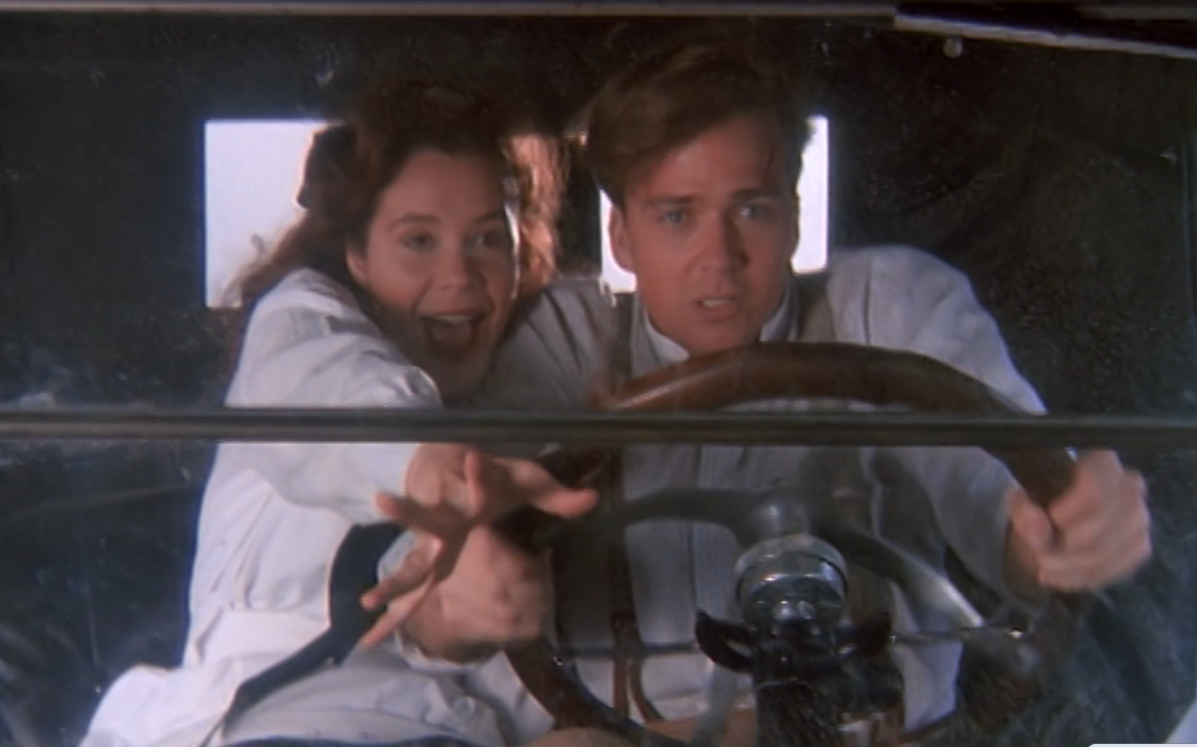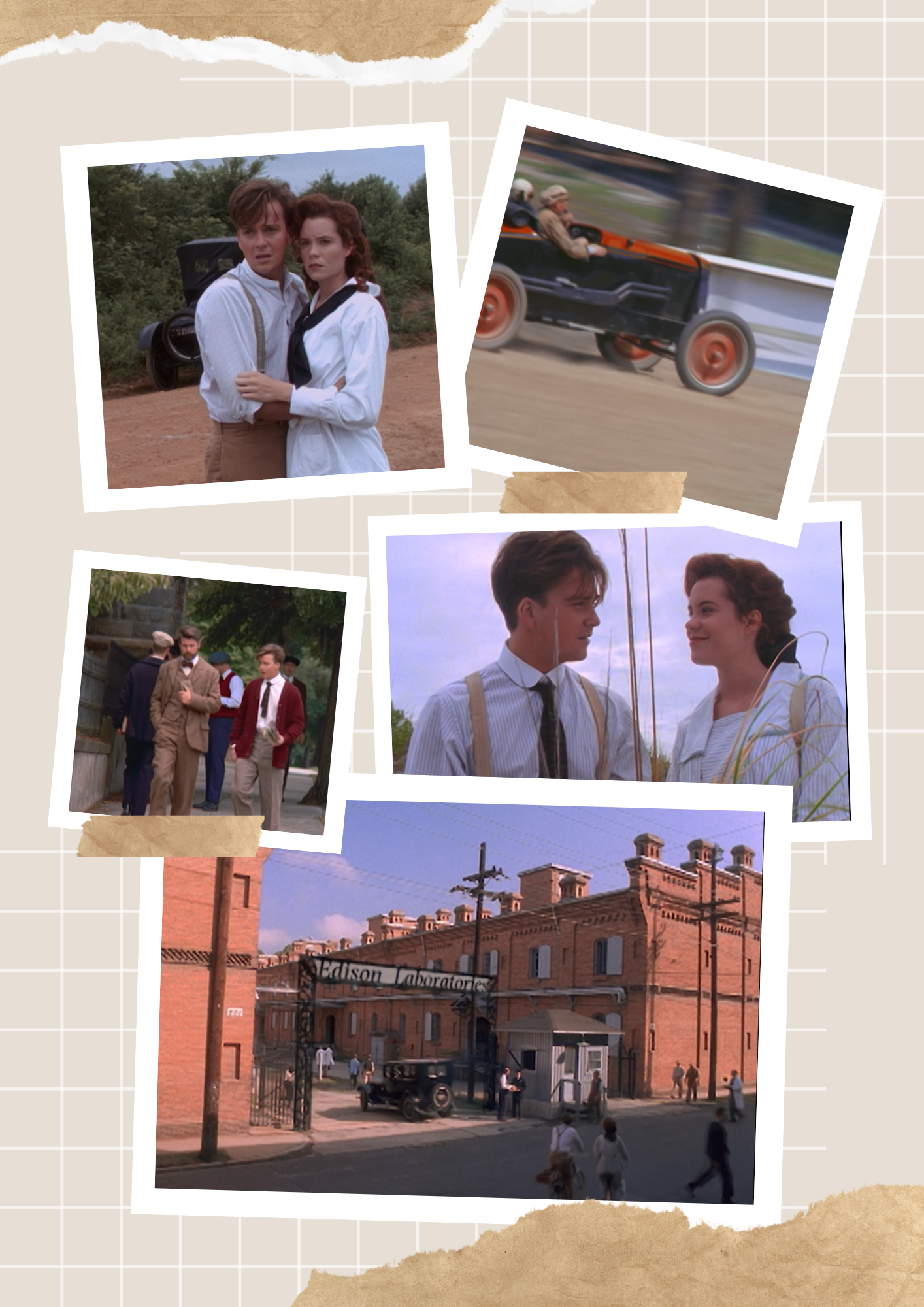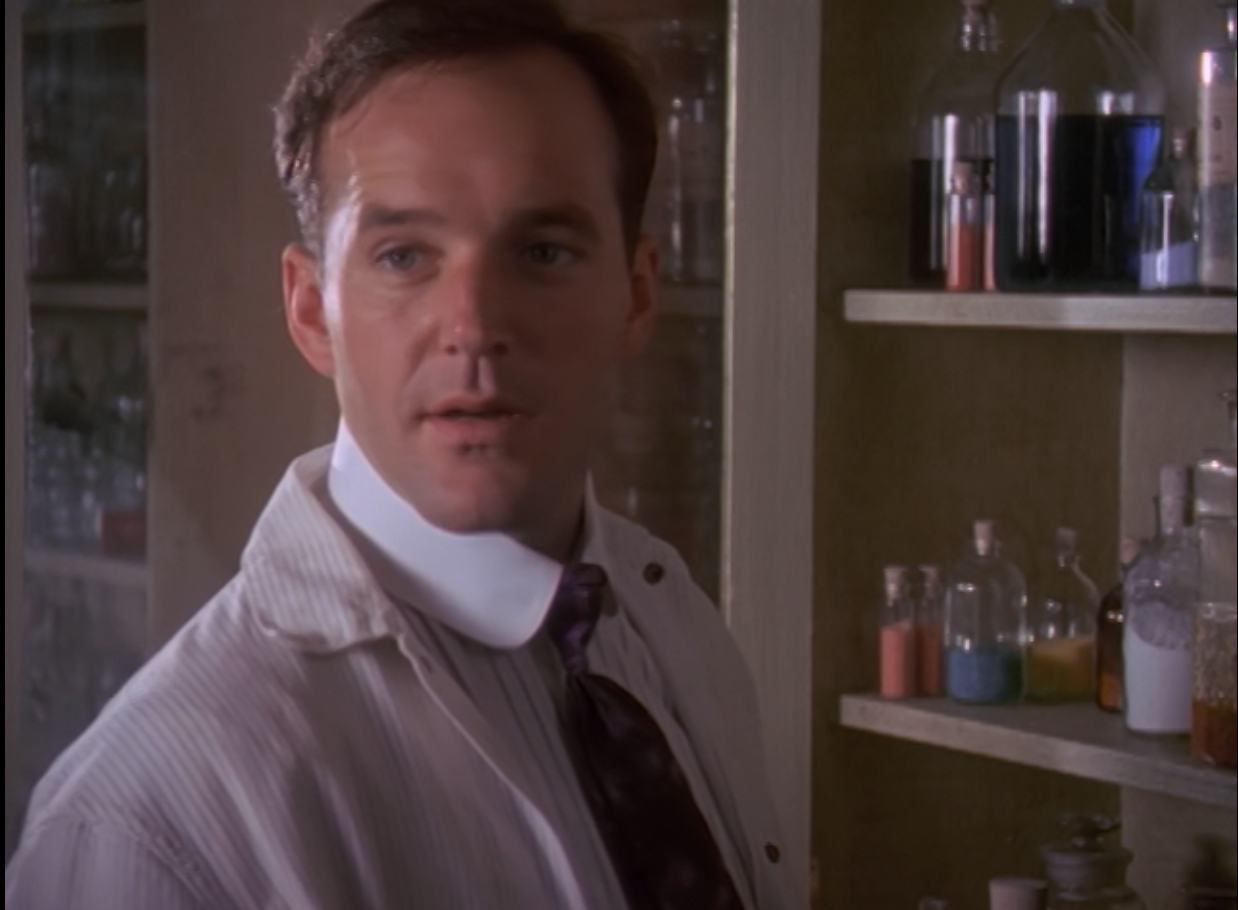Directed by Joe Johnston; Written by Matthew Jacobs; Starring Sean Patrick Flanery, Lloyd Owen, Robin Lively, Mark Taylor, Clark Gregg
The year is 1916, with about a six-year time jump from the previous episode, and Indy is living in Princeton with his father and attending to high school. Anna Jones passed away in 1912, and Miss Seymour is absent, since Indy no longer requires a tutor.
Sean Patrick Flanery is now portraying Indy, due to the age jump. And once my teenage self saw him in the pilot episode, a crush was born. I always disliked how the series jumped back and forth in time during its original airing, as I always preferred the older young Indy.
Back to the plot, though. Indy is working as a soda jerk and dating Nancy Stratemeyer, the daughter of Edward Stratemeyer, of Tom Swift fame.
Currently, Indy’s biggest concern is a bully named Butch and hoping he’ll be able to take Nancy to the prom in her father’s Bugatti to make Butch jealous. But the car is in need of repairs, and it won’t be ready until after prom. Desperate, Indy asks Thomas Edison’s assistant Dr. Thompson over dinner if he can look at the generator. He claims that when he perfects the Edison battery, the time of the internal combustion engine will be over, but he bemoans the fact that Edison gets all the credit.

The next day, Indy and Nancy travel to Edison Laboratories and catch an aerodynamics test in action, and the car has reached 98 mph on the track. But while they are outside admiring the test car, Dr. Thompson is abducted from inside, and a car speeds past them. They go inside and find electrical engineer and Dr. Thompson’s assistant, Dickinson, (played by Clark Gregg) lying on the floor. A stern-looking Thomas Edison arrives, and he learns that the submarine plans were taken along with Thompson. They also took plans for the electric battery, but Nancy’s father later surmises this was by mistake. With war happening in Europe, these plans falling into the wrong hands could be disaster, particularly since it seems the kidnappers were German.
With Indy translating the German spoken by the abductors and putting together other clues, he and Nancy track Dr. Thompson to a nearby poultry barn. Thompson says the abductors spoke other words in German, and Indy once again translates: high tide and low tide.
A stubborn Nancy decides to stake out the beach at high tide, thinking the Germans will arrive to retrieve the stolen plans. A reluctant Indy, worried about losing his job, joins her. Unfortunately, the couple only sees the police at the location, also searching for the Germans.
That evening at dinner, while Indy pours oil onto his food, something clicks, and he calls Nancy to tell her they need to go to the oil refinery. He realizes that the oil companies stand to lose money if the battery used in the electric car reduces the need for oil. (Sound familiar? This is still an issue today.) He grabs his famed fedora and finally puts it on as they head out the door.
At the refinery, they see letters that match the partial words they found at the poultry farm. They also find the stolen plans and steal them back, culminating in a chase where Indy does an impressive somersault into the water as he jumps off his bike, with the thieves following him in their car.
The next day, when returning the plans to Dr. Thompson, Nancy picks up on the fact that Thompson knew the plans were at the oil refinery, though neither she nor Indy had mentioned that. They realize he had been part of the scheme all along. They demand to know why, and Thompson says that Edison gets the credit for everything, when his lab assistants do much of the work. He tries to flee by car, but Indy and Nancy chase him in another car. After taking a shortcut over a rickety bridge, they catch up with Thompson, nearly colliding with him, and both cars veer off the road. The police aren’t far behind, and they arrest Thompson.

Back at the lab, Edison thanks the young couple for their help and loans them a test car for the prom. They arrive in style, impressing their classmates and putting Butch to shame.
But later Indy appears to be distancing himself from Nancy as they discuss spring break plans. He’s going to Albuquerque with his father and will meet up with his cousin Frank. He also writes to T.E. “Ned” Lawrence and mentions the war and reminisces about their adventure in Egypt. He’s onto his next adventure and ready to leave Princeton and high school far behind.

Thoughts
I have so many thoughts about this episode!
Theme-wise, it addresses individuals who take credit for work done by others, or at least with others. Edison took sole credit for inventions such as the motion picture camera, though it was invented by his associate William K.L. Dickson (who may have inspired Dickinson in this episode).
Stratemeyer, though extremely prolific himself, employed a group of freelance writers to write the books in his Stratemeyer Syndicate, and he retained the copyrights and published the books under different pseudonyms for each series, never crediting the actual writers.
Speaking of Stratemeyer, this episode had me racing to my encyclopedia (remember, this first aired about thirty years ago) to look this guy up, because Nancy Stratemeyer reminded me an awful lot of Nancy Drew (red hair, solving mysteries), and I think I had already made a connection between the Nancy Drew books and Tom Swift books. But I learned the devastating news that Carolyn Keene (the name on the Nancy Drew books) was in fact not a real person, but a combination of many writers. That explained why my letter to Ms. Keene was never answered by Simon & Schuster (the publishers of the Nancy Drew Case Files series that began in the 1980s).
The more you know!
And this forever cemented my dislike of Robyn Lively. Oh, nothing against her acting or anything. I’m sure she’s a lovely person, but watching this as a teenager, I was insanely jealous of her for acting, not only with my latest crush (Sean Patrick Flanery), but I knew her initially for acting with my first Hollywood crush, Ralph Macchio in The Karate Kid Part III.
Related DVD Documentaries
- Thomas Edison – Lighting Up the World
- Invention and Innovation – What’s Behind a Good Idea?
- The Mystery of Edward Stratemeyer
History
Thomas Edison (1847–1931) Inventor and businessman, credited with the invention of the phonograph, motion picture camera, and light bulb. Demonstrated a nickel-iron-battery in 1910, but it was never really successful, and lead acid batteries became the batteries used with gas-powered cars.
Edward Stratemeyer (1862–1930) Prolific writer and publisher, producing over 1,300 books himself. He did have two daughters, but they were named Harriet and Edna. Nancy Stratemeyer is a fictional character.

Fun Facts
Clark Gregg, who portrayed Dickinson, is probably best known as Agent Phil Coulson in the Marvel franchise.
Mark Taylor (Dr. Thompson) appeared in Innerspace; Arachnophobia; and Honey, I Shrunk the Kids.